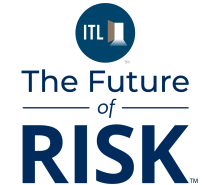Accurate and well-governed data is critical for success in today's data-driven P&C insurance industry. But the sheer volume and complexity of data presents significant challenges to insurers, which must manage complex regulatory requirements while ensuring accuracy for underwriting and claims processing.
Conventional data governance methods often struggle to keep pace, leading to data quality issues, compliance risks, and missed opportunities for insights. Generative AI offers the opportunity to automate processes, improve data quality, and gain competitive advantage through well-informed decisions and streamlined operations.
At its core, Generative AI uses deep learning architectures to create models that learn complex statistical representations of the data they have been trained on and generate new data that conforms to the learned distributions. Unlike discriminative AI/ML models, which are designed for tasks like classification and prediction based on existing data, Generative AI models focus on generating new data. This capability enables a wide range of applications, from synthesizing text and images to generating synthetic data for testing and training other models and creating metadata or data quality rules for an analytical pipeline.
See also: How AI Can Maximize Unstructured Data
Here are some of the ways P&C insurance companies are leveraging Generative AI to address key data governance challenges and unlock opportunities:
- Improving data quality through automated metadata generation and data quality rule creation
- Streamlining data stewardship and metadata management processes
- Strengthening compliance with evolving regulatory requirements
Generative AI helps insurers automate the generation of metadata for business attributes, tailored to their specific terminology and standards. This not only standardizes existing metadata but also generates information for missing metadata, which is particularly helpful with legacy systems that may not have good metadata definitions in place. Effective implementation of AI models and integration with data quality and data observability platforms enables continuous monitoring and improvement of data quality. This approach helps generate comprehensive data quality rules, consistently identify critical data elements for operational reporting and apply company-specific language for business glossary definitions.
Data stewards play a vital role in data governance, ensuring quality, integrity, and security of the company's data assets. Generative AI significantly reduces the workload for the data stewards by enhancing metadata management and keeping data catalogs current and comprehensive. Strategic integration of AI into data governance workflows can deliver time savings ranging from 50% to 90% for data stewards on tasks such as generating business definitions, identifying critical business attributes, and creating data quality rules, helping data stewards focus on strategic, human-in-the-loop activities that maximize the value of their subject matter expertise.
See also: A Data Strategy for Successful AI Adoption
AI-driven data classification can significantly strengthen regulatory compliance and enhance the protection of sensitive information. By analyzing both sensitivity (e.g., PII, PHI) and contextual attributes (e.g., document type, ownership), AI models, including those leveraging computer vision and natural language processing, extend discovery and classification to documents, images, and other unstructured data. This contextual understanding enables far more effective classification than traditional methods based on text patterns.
Data protection and governance platforms now provide pre-trained models and the flexibility to incorporate custom-trained models to accomplish this. Language models can also automate the monitoring and analysis of regulatory changes published by state insurance departments, the NAIC, and other relevant authorities, assessing their impact on existing policies and processes.
The convergence of AI and data governance presents a significant opportunity for P&C insurance companies to transform their operations and gain competitive advantage. However, successful implementation requires deep expertise across all these domains.









